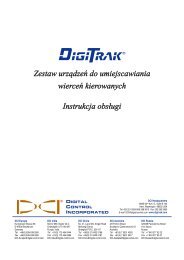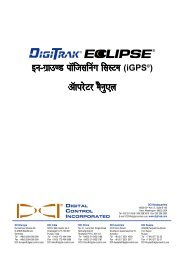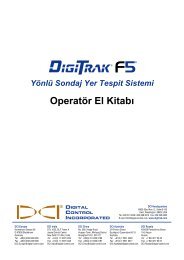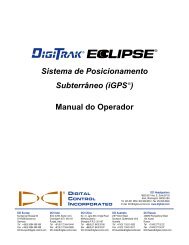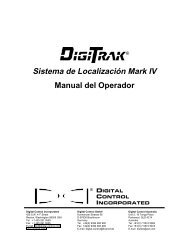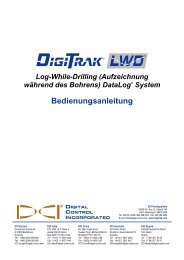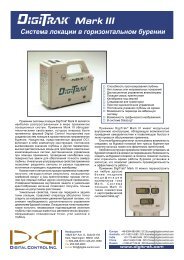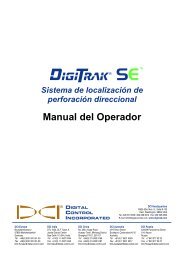history of walkover locating technology - Digital Control Inc.
history of walkover locating technology - Digital Control Inc.
history of walkover locating technology - Digital Control Inc.
Create successful ePaper yourself
Turn your PDF publications into a flip-book with our unique Google optimized e-Paper software.
fashion. The locator failed to perform because the drilled hole was not straight and the drill pipeended at the tool head being located. Attention was then turned to developing a dipole transmitterthat could be fitted into the boring tool head. This proved to be the solution, although thelocator had to be rotated 90 degrees relative to how it was designed to be used in order to capturethe dipole flux lines. Also a table had to be constructed to relate the depth readings from theMetrotech 810, which was calibrated for cables, to the depth <strong>of</strong> the dipole transmitter in thedrillhead.By this time, the mid 80’s, microprocessors werecapable <strong>of</strong> performing complex calculations, and theirlow cost made them attractive to incorporate intoelectronic designs. In 1985 a navigational computerwas added to the locators used by UTILX. The operatorscould type in the located coordinates <strong>of</strong> thedrillhead, and the computer would return a steeringcommand. However, the operators did not like theextra work involved, so the computer was removedfrom the locator. Still, the requirements <strong>of</strong> <strong>locating</strong> aboring tool were sufficiently different from <strong>locating</strong> acable, so the development <strong>of</strong> a new locator wasrequired. In 1986 the author and Albert Chau developedthe FlowCator ® . This locator used an array <strong>of</strong>antennas to determine the position <strong>of</strong> the tool head.Arrows directed the operator fore and aft along theintended path. Adjacent to the tool head the operatorwould press a button and the FlowCator would takemeasurements from the different antennas in the arrayand compute the depth and lateral <strong>of</strong>fset from theintended path. The instrument also had the capability<strong>of</strong> providing a steering command, but that feature wasnever used because the operators felt it added toomuch time to the <strong>locating</strong> process.FlowMole ® FlowCator ®Several problems were encountered in <strong>locating</strong> with <strong>walkover</strong> systems during their developmentto this stage. The first was the ghost or phantom locate points. These points representpeaks in the signal strength fore and aft <strong>of</strong> the tool head. They are produced by the receiver’santenna arrangement. Although these ghost peaks are not as strong as the peak over the head,they can and still do fool many operators. The result is the operator can mislocate the tool headand the computed depth is not correct. Even the FlowCator with its arrows for directing theoperator could be fooled unless it was in the vicinity <strong>of</strong> the tool head.The second challenge <strong>of</strong> <strong>walkover</strong> systems was in training operators to control the depth <strong>of</strong>the drillhead. Left/right steering was easy by comparison, because the operator could mark thelocate points on the ground surface and see trends from these marks. Depth, on the other hand,had no such cues, and novice operators would <strong>of</strong>ten find themselves pushing in drill pipe with adepth oscillation that resulted in the tool breaking the surface. A knowledge <strong>of</strong> the pitch orienta-4



